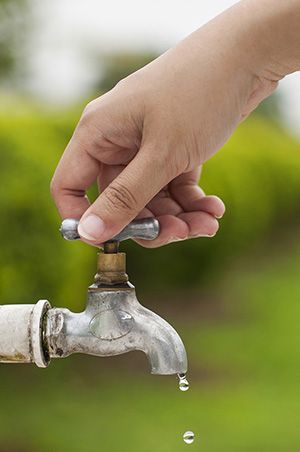 Just before the holidays, Montgomery County Commissioners approved a plan that will raise water and sewer rates for county customers 14 percent in 2018 and another 5.6 percent each year after through 2022, according to an article in the Dayton Daily News. The article also said that the average Montgomery County residential customer, currently paying around $170, will see their quarterly water bill rise approximately $24 next year.
Just before the holidays, Montgomery County Commissioners approved a plan that will raise water and sewer rates for county customers 14 percent in 2018 and another 5.6 percent each year after through 2022, according to an article in the Dayton Daily News. The article also said that the average Montgomery County residential customer, currently paying around $170, will see their quarterly water bill rise approximately $24 next year.
However, you can help curtail this cost by making simple adjustments on a daily basis. Water conservation can be easy to do, and there are many different ways to do it. Here are several tips on how to save money on your monthly bill, operate more efficiently, reduce water usage and protect you from any major plumbing mishaps:
- Installing water-saving devices in the home is a great place to start. There are all kinds of new showerheads, taps, flush reducers, aerators, and water flow valves on the market that can help reduce water usage.
- Use your dishwasher instead of washing dishes by hand, and don’t pre-rinse dishes. Only run the dishwasher when it’s full.
- If you like to drink cold water, keep drinking water in the refrigerator instead of leaving the water running until it reaches the temperature you want it to be.
- Don’t leave the faucet running while brushing your teeth or shaving.
- Choose to compost food or throw it in the garbage instead of using a garbage disposal, as these appliances use a lot of water.
- Defrost food in the refrigerator or the microwave instead of running it under warm water.
- Wash only full loads of clothing.
- Stop wasting water due to leaky pipes, faucets or toilets. If there are leaks, fix them. Much of the water wasted annually comes from leaky faucets, showerheads, and toilets. One drip per second can waste approximately 2,000 gallons throughout the year. Inspect visible pipes for discoloration and corrosion. If you find any, have a professional look at replacing them.
- Replace older toilets, showerheads or faucets in favor of newer, more efficient models. You can save yourself lots of cash by switching to more up-to-date, low-flow styles.
- Take shorter showers. Everyone in the family can conserve water by spending less time in the shower. In most homes, showers are the third-largest water usage, after toilets and clothes washers. Also, try turning off the water while shampooing or shaving.
- Install shower managers that can be set for a variety of shower times. Before the time limit is up, the water flow is reduced by two-thirds, warning that the water is about to shut off.
- Purchase more energy-efficient appliances, including water softening or filtering systems.
- Install automatic shutoff nozzles to help your family conserve water. Shutoff nozzles are placed between the pipe and the showerhead, and allow you to turn the water off while shampooing and soaping your body. Just turn it back on when you are ready to rinse. These also work on garden hoses.
- Replace the old water heater with a new, more efficient model. The cost of a new one will be recouped within a few months. This could save you money not only on your water bill but also on your energy bill. Ask a professional to make sure all of your equipment is the proper size for your home.
- Outside your home, you can use watering gauges to measure the amount of water a lawn sprinkler is using, then come up with a watering schedule to help conserve water. There are also rainfall shutoff devices. Don’t leave outdoor sprinklers on all the time – put them on a timer and make sure they are watering your lawn and not a building, sidewalk or street.
No one can live without water, but with water bills on the rise, we can all make sacrifices to use it more efficiently and save money in the long run.
